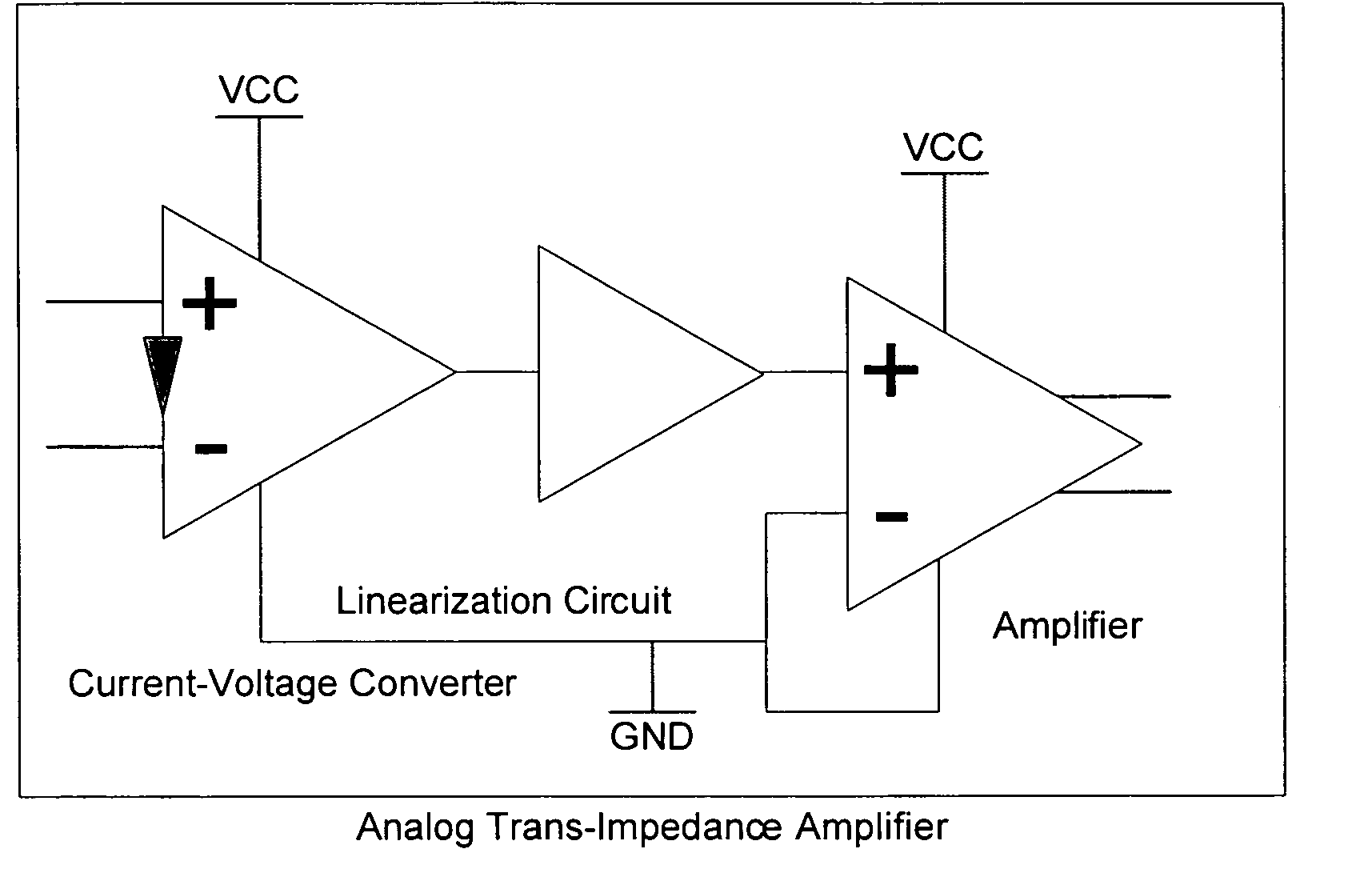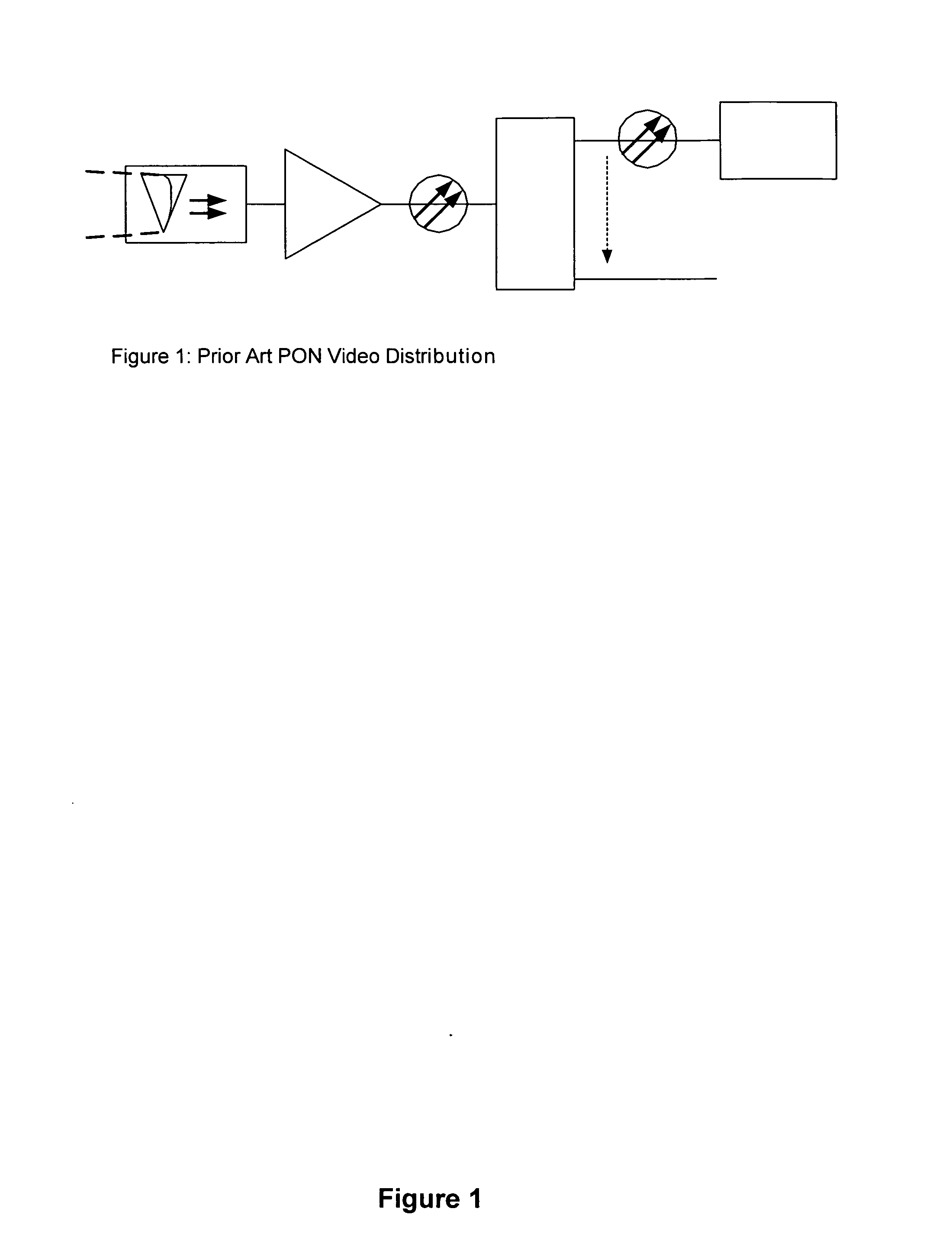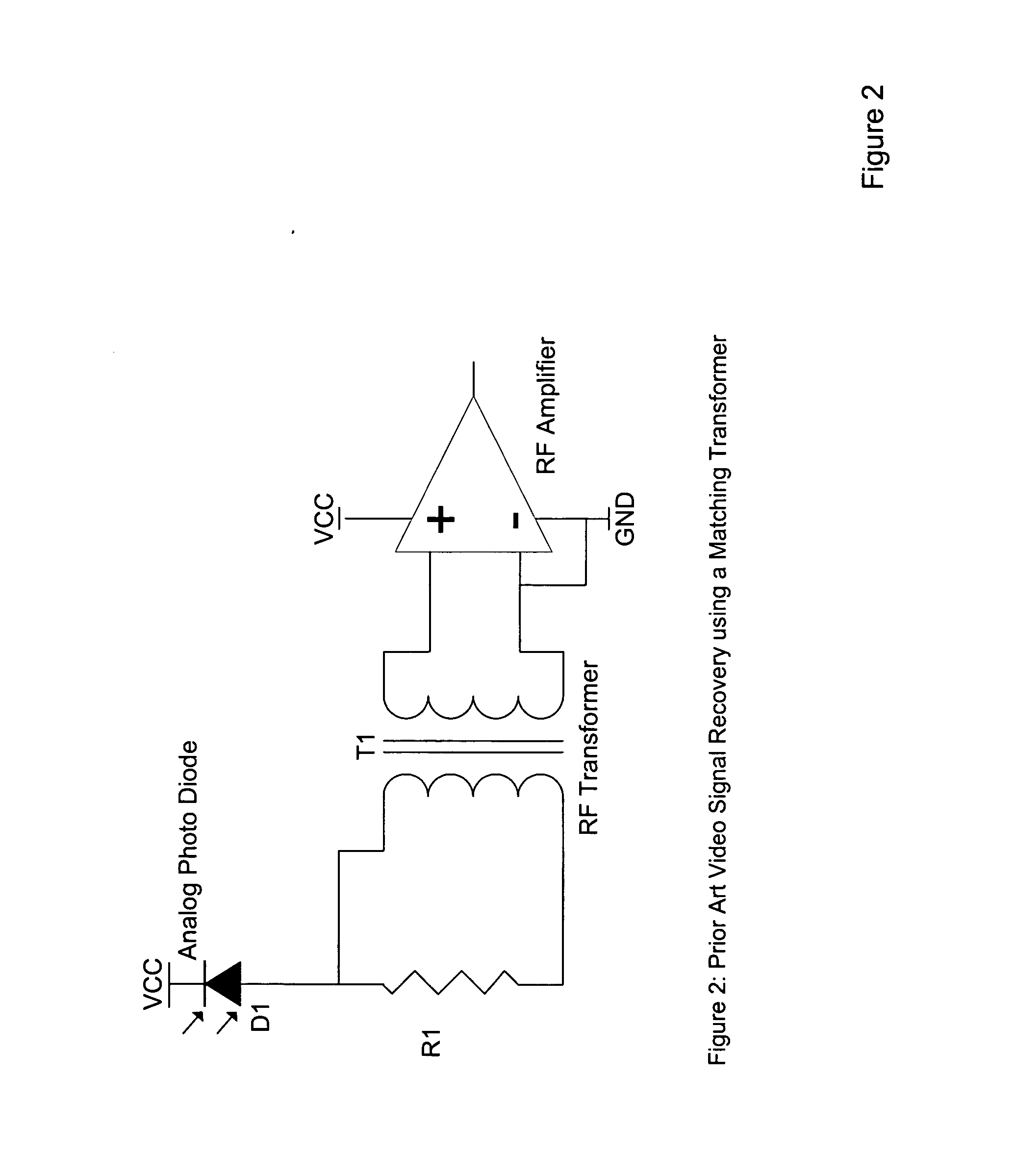Linearized trans-impedance amplifier
a trans-impedance amplifier and linear technology, applied in amplifiers, amplifiers with semiconductor devices only, amplifiers, etc., can solve the problems of high component and system cost, slow deployment owes, and the failure of brute force solutions to be implemented in the face of economic realities, and achieve fast overload recovery, high current gain, and good accuracy
- Summary
- Abstract
- Description
- Claims
- Application Information
AI Technical Summary
Benefits of technology
Problems solved by technology
Method used
Image
Examples
Embodiment Construction
[0061] In regards to communications networks and distribution schemes in general, multiple disparate systems have been created in order to supply data and other communication services to end-users. As such, a typical home will have to incorporate multiple receivers in order to accommodate the receipt and / or transmission of data for each of these different systems. These systems can include phone and fax services, analog and digital, one-way and two-way video services, IP-based data services, etc.
[0062] With the use of an advanced ATIA, multiple types of services can be offered at a cost competitive rate with other delivery mechanisms using a single unified delivery system. This unified delivery system will most likely support a mixture of: [0063] 45-862 MHz one-way cable television. [0064] 5-65 / 85-862 MHz full duplex cable television, permitting the use of DOCSIS compliant cable modems. DOCSIS is the ITU endorsed “data over cable systems interface standard” as defined by US based C...
PUM
 Login to View More
Login to View More Abstract
Description
Claims
Application Information
 Login to View More
Login to View More - R&D
- Intellectual Property
- Life Sciences
- Materials
- Tech Scout
- Unparalleled Data Quality
- Higher Quality Content
- 60% Fewer Hallucinations
Browse by: Latest US Patents, China's latest patents, Technical Efficacy Thesaurus, Application Domain, Technology Topic, Popular Technical Reports.
© 2025 PatSnap. All rights reserved.Legal|Privacy policy|Modern Slavery Act Transparency Statement|Sitemap|About US| Contact US: help@patsnap.com



